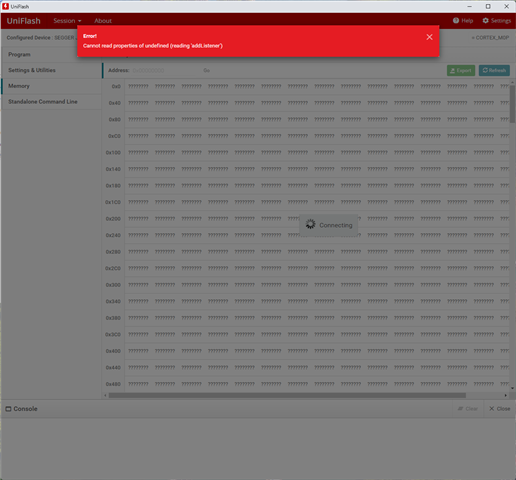Other Parts Discussed in Thread: UNIFLASH, SEGGER
Tool/software:
Hi Support,
-
adc_to_uart
-
sysctl_mclk_syspll
-
Systick_periodic timer
-
The launchpad MCU has the following identification:M0G3519SX46AVGCW
-
While we built our own hardware with the following MCU identificationMOG3519SX51C78JW





